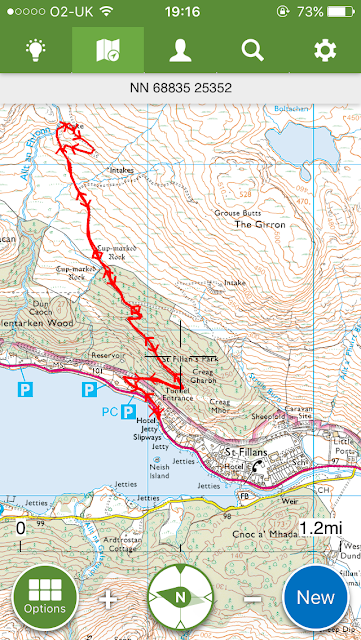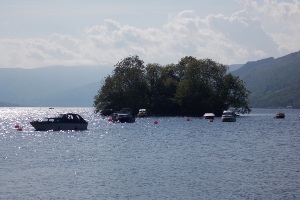A beautiful day for a breathe of fresh air and for catching some rays in the hills above St. Fillans with Lesley and Sitka.
The Neishes, defeated, retreated to their island at Loch Earn where they remained for almost a hundred years. Then, in the winter of 1612, when they once again felt strong enough to antagonise the Macnabs, the clan ambushed their rival’s messenger at Glen Lednoch and relieved him of the Macnab’s Christmas provisions.
Incensed by his AWOL festive feast, the chief ordered his eldest son, known as “Smooth John Macnab”, to pay the Neishes back in kind. Procuring a boat, he and his brothers proceeded to carry it the twenty or so miles over the hills to Loch Earn — all while the Neishes slept off their hijacked hangovers.
Asked who he would like to see least, the clan leader offered Smooth John’s own name. “Then I am he”, came the enemy heir’s most likely apocryphal reply, “but rough enough I’ll be this night.” The Neishes, having thought their island impenetrable, were caught by surprise and quickly slain. One survivor, a young boy, survived the massacre, and it is from he that all remaining Neishes are thought to descend.
I tell you this because two reminders are believed to remain from this little-known chapter of Scottish history — three if you include “The Crocodile”, which has been repeatedly repainted in the years since. The stone at which the Neish’s leader fought is still said to carry his blood, while fragments of the boat abandoned by the Macnabs on their return from Neish Island are rumoured to still litter the hillside.
St Fillans — a village founded in the 18th Century as Port of Lochearn and later renamed in 1817. https://findinganeish.com/














No comments:
Post a Comment